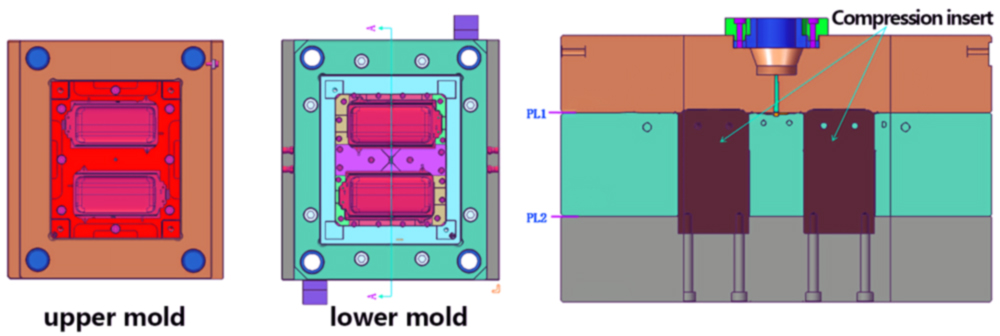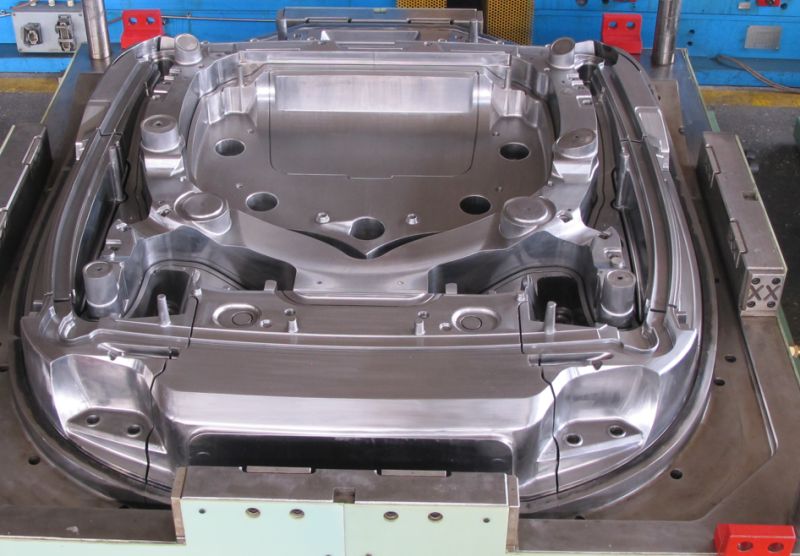What is the structure of a compression mold?
Join Date: 2022-07-21
What is a compression mold?
The molded material is loaded into a heated mold cavity or filling chamber, the mold is closed and pressurized on a hydraulic press, the molded material in the cavity is molten and flows under heat and pressure, filling the cavity, and then the polymerization reaction occurs to make it solidify and set, obtaining the desired molded product. This kind of mold is called compression mold, or compression molding press mold, etc.
Compression mold can be divided into two major parts: the upper mold fixed on the press and the lower mold fixed on the worktable. When the mold is opened, the upper part of the mold moves up, the concave mold is separated from the lower mold for some distance, and the side core is extracted manually, and the product is pushed out of the mold by the push rod.

From perspective of the important components of compression mold, it can be divided into the following major parts.
-
①Cavity. The cavity is the part of direct molding products, and it plays the role of loading material together with the filling cavity when adding material.
-
②Feeding cavity. It refers to the upper part of the concave mold, because the plastic raw material has a larger volume than the plastic products, the cavity alone can not accommodate all the raw material before molding, so there is a section of the filling cavity above the cavity.
-
③ Guiding mechanism. It is composed of guide pillar arranged around the upper mold seat plate and the guide sleeve of the lower mold. The guide mechanism is used to ensure that the upper and lower dies are perfectly aligned when the dies are closed. In order to ensure the horizontal movement of the push-out mechanism, there are two guide pillars on the lower die base plate.
-
④ Lateral parting and core extraction mechanism. Like the injection mold, when molding plastic parts with side holes and side concave, the mold must be equipped with various lateral parting and core extraction mechanisms in order to release the plastic parts. The part with side holes is extracted by manual screw before ejection.
-
⑤ Demoulding mechanism. The demoulding mechanism is similar to the injection mould. The demoulding mechanism is composed of push rod, push rod fixing plate, push plate, press top bar and other parts.
-
⑥Heating system. Thermosetting plastic molding needs to be carried out at a higher temperature, so the mold must be heated. Common heating methods are: electric heating, steam heating, gas or natural gas heating, etc. Natural gas heating, etc. There are two heating plates, one for the concave mold and one for the convex mold. In thermoplastic molding, a temperature control channel is opened around the cavity, and during the plasticizing and setting stages, steam is fed for heating or cold water is fed for cooling, respectively.
Why do we need to pay attention to the specific structure of the compression mold?
-
Firstly, the shape, size, surface finish, parting surface and demoulding method of the mould cavity have a very important influence on the size, shape accuracy, mechanical properties and apparent quality of the product.
-
Secondly, in the production process, the mold structure has a great influence on the ease of operation and production efficiency. We should try to reduce the manual labor in the process of mold opening, mold closing and mold release. This can improve production efficiency.
-
In addition, the mold also has a greater impact on the cost of products. Generally speaking, the mold design and manufacturing costs are high, and when the product is not produced in large quantities, the mold cost will account for a larger proportion of the product cost. Therefore, as far as possible, we should use a simple and reasonable structure of the mold to reduce the cost.
Compared with injection molds, compression molds have the following characteristics: no pouring system, simpler equipment, more uniform product performance, suitable for poorly flowing plastics, low production efficiency, not easy to achieve automation, products often have flying edges, high requirements for mold materials and heat treatment.

MDC has extensive experience in the field of compression molding, contact us now to order a compression mold. MDC has developed compression molds such as spoiler templates, fenders, bumpers, front panel on trucks, engine covers, doors, bottom fenders, car ceilings, seat backs, electric boxes and bathroom door panel basin, etc.



